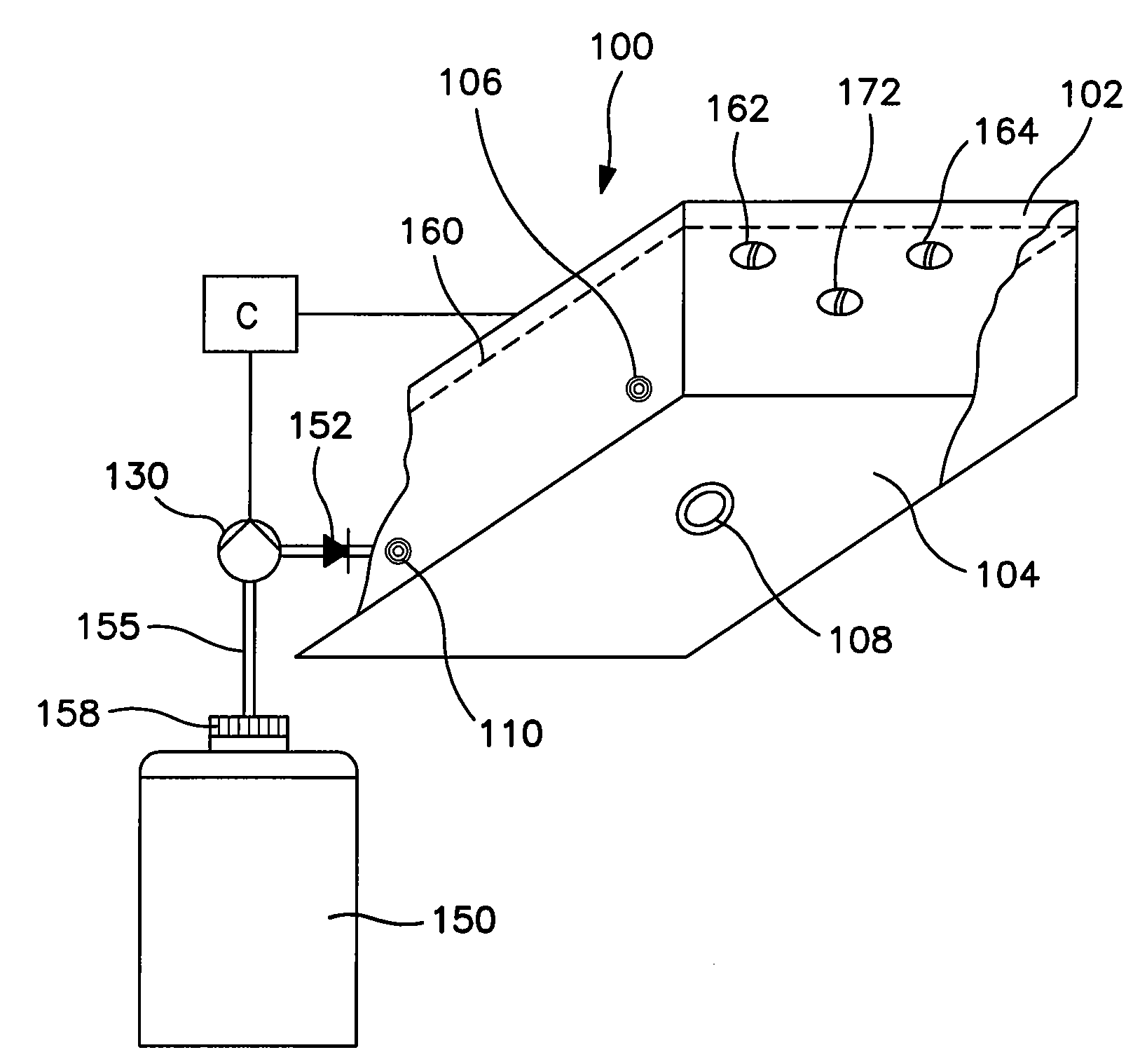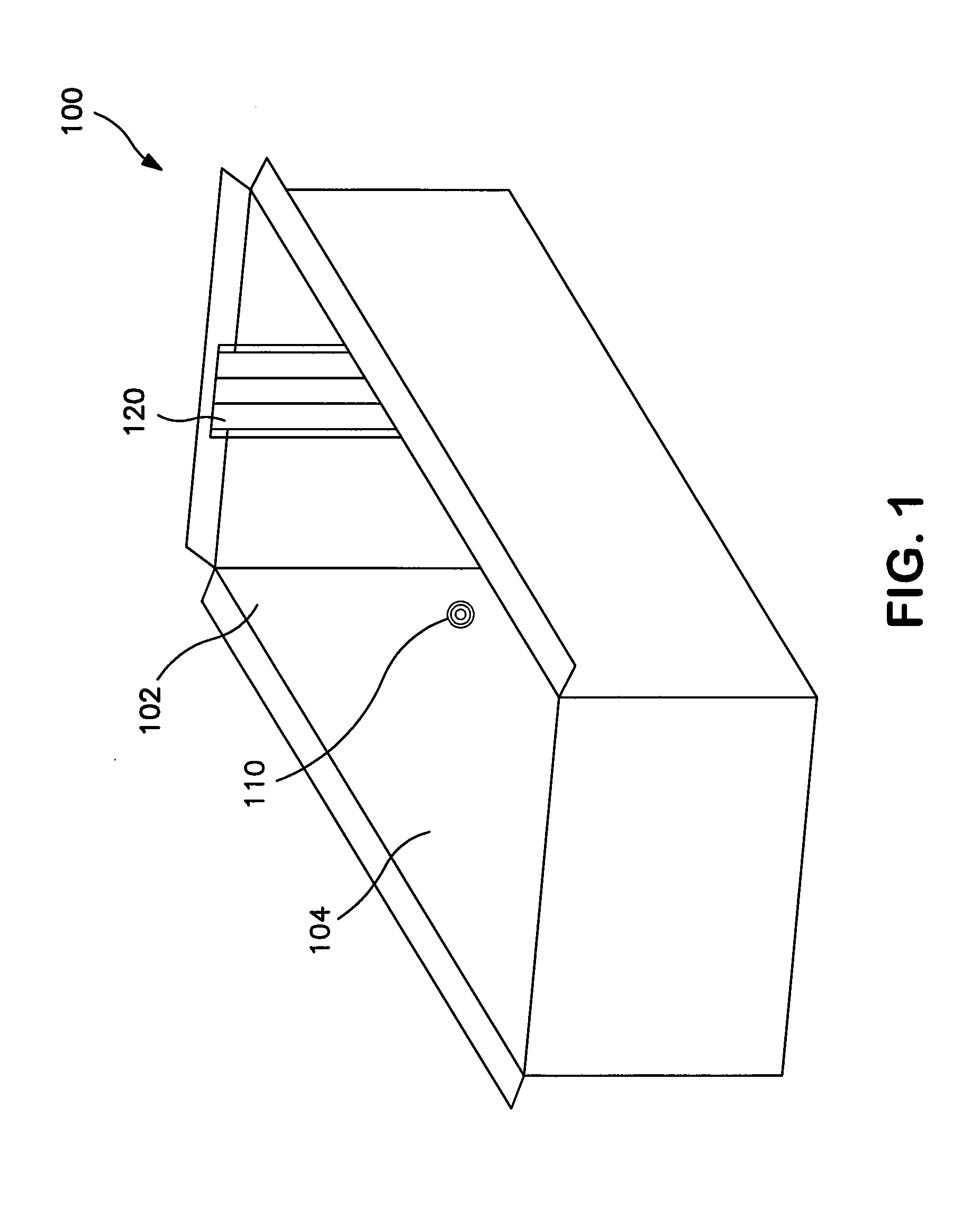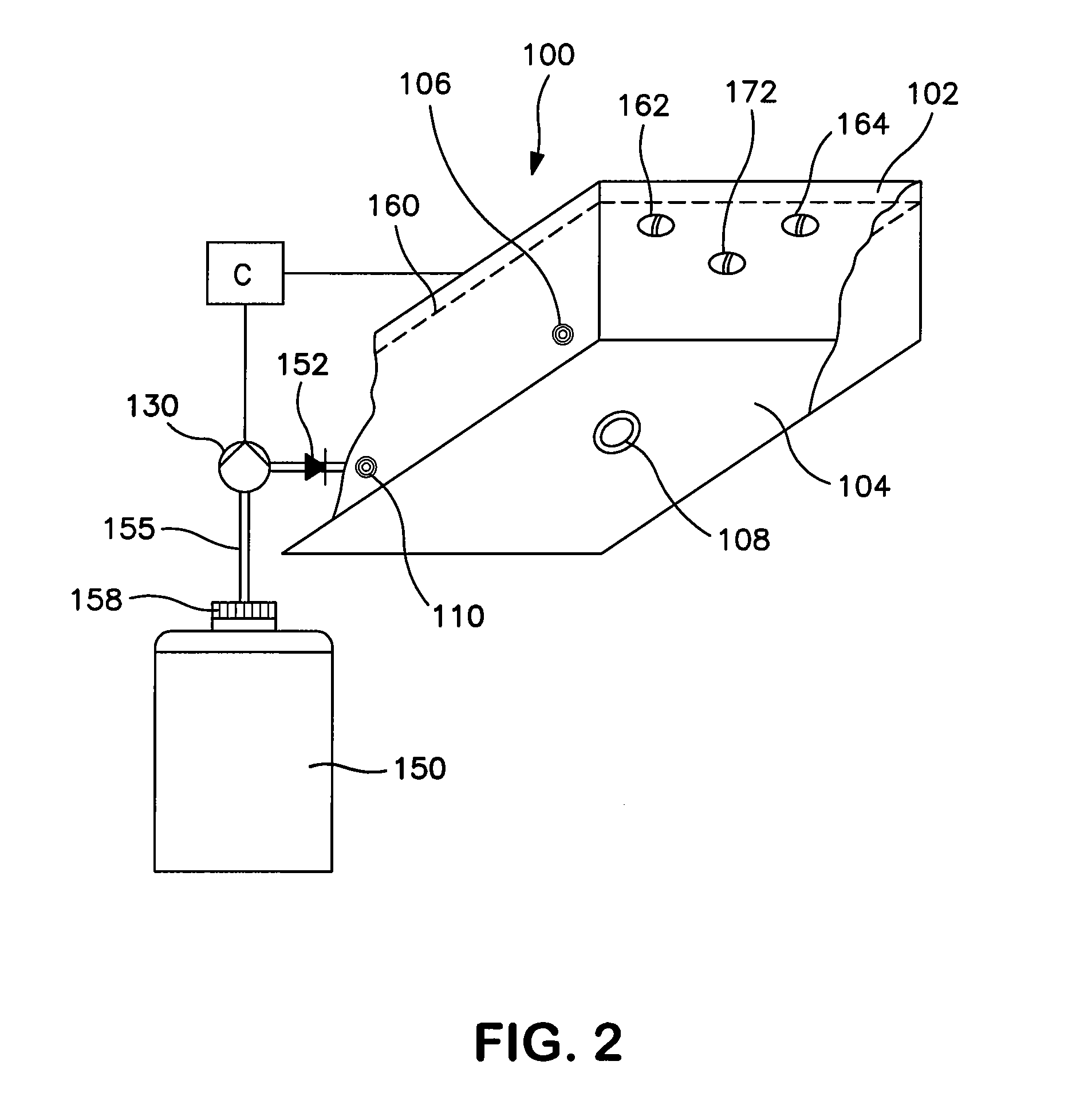Automatic cooking medium level control systems and methods
a technology of automatic cooking medium and level control, which is applied in the direction of bread ovens, household appliances, kitchen equipment, etc., can solve the problems of affecting the level of cooking medium in the cooking vessel, the surface of the food product, or the entire food product, may not be fully submerged in the cooking medium, etc., to achieve automatic maintenance of the level of cooking medium
- Summary
- Abstract
- Description
- Claims
- Application Information
AI Technical Summary
Benefits of technology
Problems solved by technology
Method used
Image
Examples
Embodiment Construction
[0020]Preferred embodiments of the present invention, and their features and advantages, may be understood by referring to FIGS. 1-4, like numerals being used for corresponding parts in the various drawings.
[0021]Referring to FIGS. 1 and 2, a fryer apparatus 100 according to an embodiment of the present invention is depicted. Fryer apparatus 100 may comprise at least one cooking vessel 104, e.g., a frypot, which may be configured to hold a cooking medium, e.g., an oil, a liquid shortening, a meltable-solid shortening, water, or the like. Fryer apparatus 100 may include an opening 102 formed in cooking vessel 104 for receiving a food product. Disposed within cooking vessel 104 is a heating element 120, which may be a heating coil, for heating the cooking medium disposed within cooking vessel 104. Fryer apparatus 100 may be a gas or electric fryer. FIGS. 1 and 2 depict an open-well fryer as fryer apparatus 100, but a pressure fryer also may be used.
[0022]Cooking vessel 104 may compris...
PUM
 Login to View More
Login to View More Abstract
Description
Claims
Application Information
 Login to View More
Login to View More - R&D
- Intellectual Property
- Life Sciences
- Materials
- Tech Scout
- Unparalleled Data Quality
- Higher Quality Content
- 60% Fewer Hallucinations
Browse by: Latest US Patents, China's latest patents, Technical Efficacy Thesaurus, Application Domain, Technology Topic, Popular Technical Reports.
© 2025 PatSnap. All rights reserved.Legal|Privacy policy|Modern Slavery Act Transparency Statement|Sitemap|About US| Contact US: help@patsnap.com



